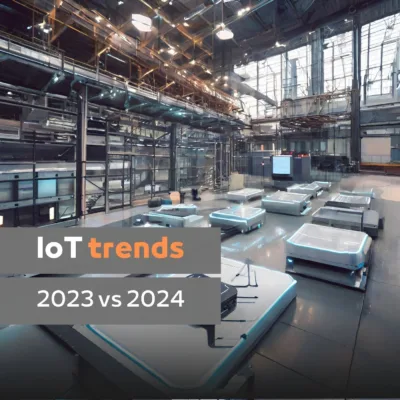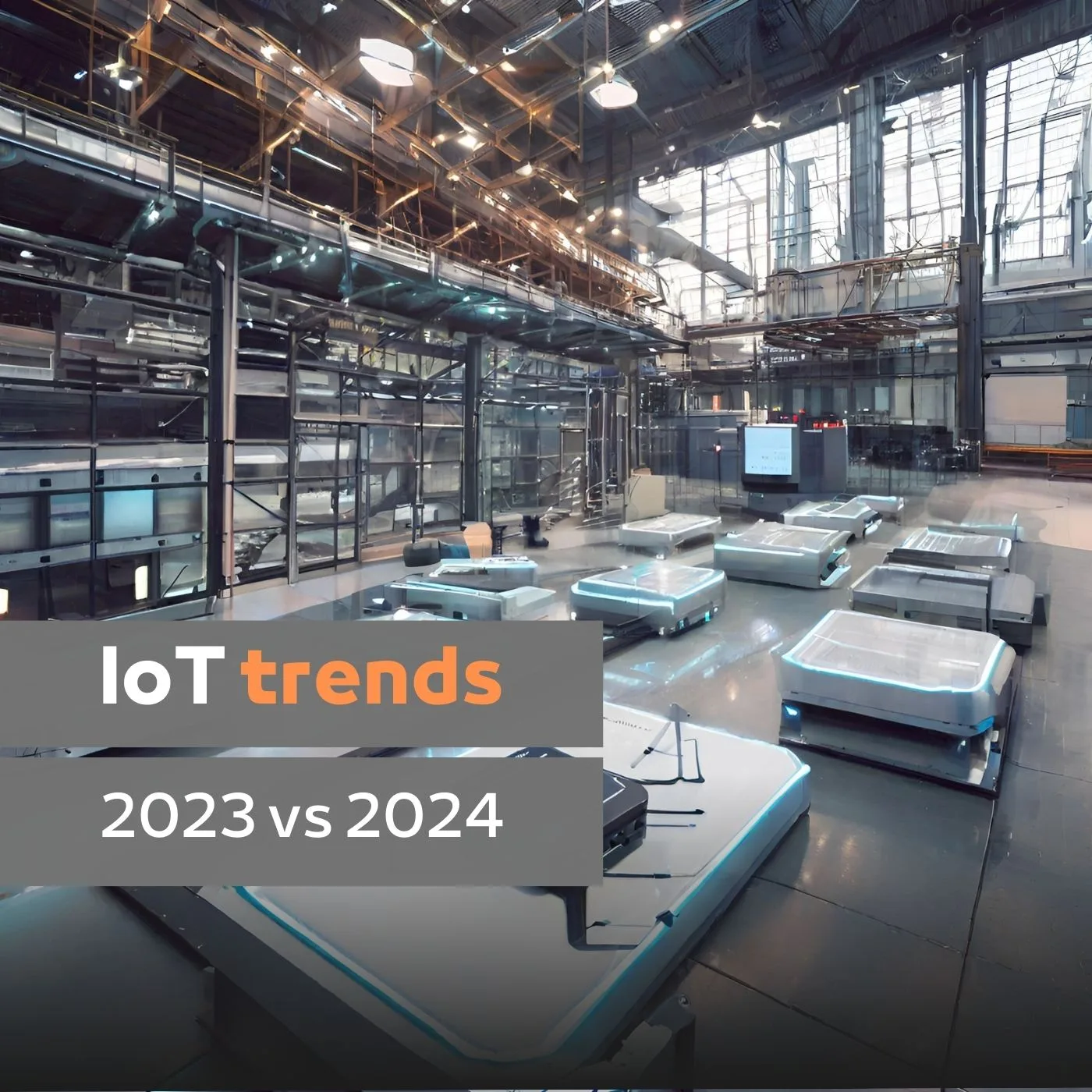 In the ever-evolving landscape of the Internet of Things (IoT), foreseeing emerging trends and market dynamics is really hard. Yet it is important for businesses seeking to explore the full potential of connected technologies. Recently, IoT Analytics released their State of IoT report both in 2023 and in 2024, and I had a look at it, of course. I was not surprised to see the impact AI has had on the aforementioned trends and the market development, and at the same time, a year ago we did not see how fast AI and IoT would converge. I think it is important to reflect on the visions laid out in previous years and examine how the IoT landscape has evolved.
In the ever-evolving landscape of the Internet of Things (IoT), foreseeing emerging trends and market dynamics is really hard. Yet it is important for businesses seeking to explore the full potential of connected technologies. Recently, IoT Analytics released their State of IoT report both in 2023 and in 2024, and I had a look at it, of course. I was not surprised to see the impact AI has had on the aforementioned trends and the market development, and at the same time, a year ago we did not see how fast AI and IoT would converge. I think it is important to reflect on the visions laid out in previous years and examine how the IoT landscape has evolved.
Vision for 2023: resilience against fluctuations
In 2023, the IoT market demonstrated remarkable resilience amidst economic fluctuations and geopolitical tensions. The State of IoT report for that year projected robust growth, an increase in connected assets, and corresponding investments in cybersecurity (and AI) within the IoT sector. While economic uncertainty lingered, there were many positive reports with IoT companies reporting significant year-on-year growth in revenue and gross margin. The focus on AI integration, semiconductor security, and industrial automation hinted at a trajectory towards a more interconnected and intelligent IoT ecosystem.
Vision for 2024: the rise of convergence and the role of AI
Fast forward to 2024, and we witness a significant evolution in the IoT landscape. AI continues to reign as the top technology priority; IoT remains a formidable contender and has a top-three corporate technology priority. However, a notable shift emerges: the convergence of AI and IoT, once seen as disruptive, is now regarded as a tailwind driving market growth. The latest research indicates a growing interest in both AI and IoT within organizations, with mentions of these technologies in the same earnings calls rising by 61% since Q3 2022. This convergence signifies a strategic shift towards harnessing the synergies between AI and IoT to drive innovation and value creation.
IoT trends 2023 vs 2024: comparative analysis
1. Semiconductor security and embedded chipsets: In 2023, semiconductor companies began investing in embedded chipset security to address growing threats. By 2024, this trend has matured, with partnerships and collaborations enhancing hardware-based root-of-trust solutions. The focus has shifted from mere investment to concrete actions aimed at fortifying IoT devices against security vulnerabilities.
2. Integration of AI chipsets in industrial automation: The integration of AI chipsets in industrial automation hardware emerged as a trend in 2023. By 2024, this trend has accelerated, with AI chipsets becoming smaller yet more powerful. The emphasis on edge AI equipment highlights a strategic move towards real-time data analytics and decision-making at the edge, fostering efficiency and security in industrial processes.
3. Rise of generative AI in manufacturing: Generative AI solutions gained traction in manufacturing in 2023, promising automation and optimization across various domains. In 2024, the race for these solutions intensifies, with vendors showcasing AI-based solutions for coding, troubleshooting, and generative design. This trend signifies a shift towards AI-driven innovation, empowering manufacturers to streamline processes and drive competitive advantage.
4. Impact of generative AI on workforce dynamics: The positive impact of generative AI on the manufacturing workforce emerged as a key narrative in 2023. By 2024, this narrative gains further validation, with projections indicating an increase in employment and upskilling due to AI adoption. Manufacturers are embracing AI not only for automation but also for strategic growth, creating new roles and opportunities for skill development.
As I compare the visions for 2023 and 2024, a clear evolution and convergence emerge. The IoT landscape has witnessed significant shifts, from resilience against uncertainties to strategic alliances and transformative innovations. The convergence of AI and IoT, along with the maturation of key trends such as semiconductor security and generative AI, underscores the dynamic nature of the IoT ecosystem. In navigating this evolving landscape, businesses must remain on their toes and closely follow and react to market trends, leveraging emerging technologies to drive growth and competitive advantage in the digital age.

